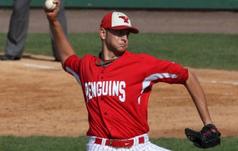 Is there a fantasy baseball auction that will happen on your league right now? I know your excited and you want to get players as soon as possible for your fantast baseball team. Don’t jump into excitement yet. Think first and read this tips for fantasy baseball auction draft. 1. Spend early, but not too much No fantasy team ever wins the championship without having at least a couple of studs on it and you can’t be the person who sits there and doesn’t spend in the first half hour of the draft. You have to have someone along the lines of Albert Pujols, Hanley Ramirez, or Alex Rodriguez that you pretty much know you can count on to produce. But, I’m not saying you spend 75% of your budget on four players and sit back and wait for one dollar bargains for the rest of the night. Balance your money well for your team. 2. Be sure to hit all the categories Most auctions are also rotisserie leagues, and while free agency is always an option, I always like to get my team off on the right foot and be sure that I get someone who is going to help me in certain categories. Don’t come out of the auction already looking like you are going to have to punt steals or saves, which are the two most popular categories to give up on. Usually you can get some good bargains late in the night in specialists in those categories and then you just have to be diligent throughout the year maintaining your team. You can have a category or two that you are strong in, but don’t come out of the night with gaping holes in your team. 3. Don’t get into a bidding war There are always guys that we all like and want to target and are dying to have on our team. The problem is the price tag starts going higher and higher and soon it is higher than you expected. But damn it, you want the guy. Well, the next thing you know you spent ten to fifteen dollars more to get that player than you had thought you should and that could be a huge detriment to your team. Keep your head and don’t go chasing a player for way too much. Sometimes someone else is just upping the price tag because they know that you really like that player. 4. Never be the guy who has no money left after the first half hour If you try to get to spend the majority of your money on say the first six guys on your roster and then try to piece things together the rest of the night you will fail. Not only do you need balance in baseball, but it is a very long season and there are always injuries. You will leave yourself no depth and likely be out of the running before the All-Star Break. There is a fine line between smart spending early and killing your chances before your auction is even over. Spend wisely! 5. Never be the guy who has tons of money left with not much time left to go... On the opposite end of the spectrum there is the person who refuses to spend the money it takes for the top stars and thinks that they can win the league by being patient and put together a team of mostly lower level stars and mid range solid fantasy players. This seems like it could work, but every team needs those studs that carry your team in certain times of the year.
This is your new blog post. Click here and start typing, or drag in elements from the top bar.
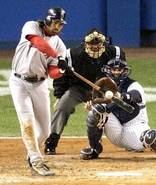 The first big domino has fallen in this week's countdown to the MLB trade deadline. The Cardinals, White Sox and Blue Jays have reportedly completed a three-team deal, with OF Colby Rasmus, 3B Mark Teahen and relievers going to Toronto; SP Edwin Jackson, OF Corey Patterson and a collection of relievers heading to St. Louis; and pitchers Jason Frasor and Zach Stewart on their way to Chicago. Let's push aside the main real baseball ramiification - that the Cardinals gave up a very talented 24-year-old outfielder for, well, not much - and focus on the fantasy sports fallout. Blue Jays: Rasmus will almost certainly start in center field, and I'm betting on a big "Eff You, Tony La Russa!" second half from him; AL-only owners should empty their FAAB budgets for Rasmus. Rajai Davis is the logical choice to lose playing time, and when Brett Lawrie gets promoted, Edwin Encarnacion is a near-lock to do the same. The final outcome should be a Rasmus-Eric Thames-Jose Bautista outfield, with Travis Snider DHing and Lawrie at third base. Snider and/or Thames could take small hits in playing time. Teahen appears to be a nice, versatile backup with no fantasy value. The Jays also apparently acquired relievers Brian Tallet, Trever Miller and P.J. Walters in this deal. Zzz .... Cardinals: Now that La Russa has won his staredown with Rasmus, the Cards have a Matt Holliday-Jon Jay-Lance Berkman outfield, with Patterson around to provide late-inning speed and defense. Jay's now-steadier playing time makes him mixed-league worthy. Jackson is likely to replace Kyle McClellan in the Cardinals' rotation, and he's been pitching well lately. Jackson's power, ground-ball arsenal and pitching coach/genius Dave Duncan are a match made in heaven, and I'll be looking to grab E-Jax in mixed leagues. The Cardinals now have some new setup men in Octavio Dotel and Marc Rzepczynski, but they're only worth your while in deep NL-only leagues. White Sox: With Jackson gone, Philip Humber can now rejoin the rotation after a temporary banishment to the bullpen. Brent Morel has a more solid hold on the starting job at third base in the wake of Teahen's departure. Frasor will join the setup corps, while Stewart might compete for a rotation slot in 2012. He's a back-of-the-rotation guy, though. As more trades happen, we will be back with more of the fantasy fallout. We will give more tips and news about fantasy baseball as everybody loves to play it.
This is your new blog post. Click here and start typing, or drag in elements from the top bar.
 One of the keys to success in fantasy baseball is being able to spot the trends and then acting upon them. Obviously, it makes a lot of sense to watch out for players who are starting to heat up so that they may possibly be added to your line up through either a trade or the waiver wire. This is even more important when dealing with players that have gotten off to extremely slow starts so far in 2011. One thing which all the following players have in common is that they all got off to a slow start to the 2011 season but are just now starting to really heat up: Carlos Pena (CHC) - After enduring an injured thumb earlier in the season which all but sapped his ability to hit for power, Pena has been on quite a tear lately. After hitting 0 HR in his first 25 games, Pena has come on strong hitting 8 HR in his last 28 GP. This hasn't halted recent trade rumours however. Regardless of where he plays, Pena should deliver on the power (although NOT on the batting average). Mark Reynolds (BAL) - Talk about a resurgence! After whimpering his way through the beginning of the season, Reynolds has turned it up big time. In his last 5 games, he is 5-for-15 with 3 HR and 8 RBI. In addition, over the last week he has a hit.294 which is absolutely Ichiro-like by Reynolds' standards. Raul Ibanez (PHI) - After a 0-for-35 dry spell, Ibanez has been clipping along at a.311 pace lately (41-for-132). He has been hitting particularly well at home recently with a.370 BA (27-for-last-73) at Citizen's Bank Park. J.J. Hardy (BAL) - Since returning from the Disabled List (where he landed because of a left oblique strain), Hardy has been hitting very, very well. He has even moved into the leadoff spot recently. He won't steal many bases but the power is coming around to be sure. His last week at the plate: 6 R, 2 HR, 5 RBI,.400 AVG. Gordon Beckham (CWS) - Left for dead in many fantasy baseball leagues, Beckham has had a nice little turnaround by going 11/37 (.297 BA) and hitting his first 2 HR of 2011. Oh yeah, one more thing these players all have in common. They all are on my fantasy baseball team. Think about adding them to yours as well. You won't regret it. Then, let’s fight and see who will win the championship cup.
This is your new blog post. Click here and start typing, or drag in elements from the top bar.
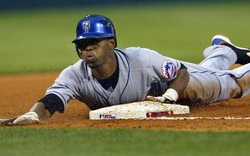 Here are my top three fantasy baseball this 2011. Hope this will help you choose too. Desmond Jennings, OF, Tampa Bay Rays With Carl Crawford likely to take the fast train to a team that can pay him more money, it seems like the path will be open for Desmond Jennings to take a starting spot for the Rays. He doesn’t translate to a ton of power, but Jennings can run like the wind and should hit for a pretty good average in the majors as well. Jennings has stolen 35 bases in the last three seasons he was healthy in the minors and he could hit 15-20 homers in the majors. Think of Jennings as a poor man’s Crawford, and while he likely won’t realize that potential in 2011, he should do enough in all categories to be a fourth outfielder or a good utility spot if you don’t draft speed early. Jordan Zimmermann, SP, Washington Nationals Before there was Lord Strasburg of Washington, Jordan Zimmermann was the big time pitching prospect in the nation’s capitol. He has struggled somewhat so far in his limited major league career, but Zimmermann was nasty in the minors, compiling a 16-7 record with more than a strikeout per inning. He underwent Tommy John Surgery in 2010, but was able to return even if the results weren’t great. The Nationals are becoming a better team little by little, so pitching for them isn’t necessarily a recipe for not getting any wins. Zimmerman has massive talent and the kind of stuff to miss many bats, and could be a guy that you snag at the end of drafts but could perform much better. Brett Wallace, 1B, Houston Astros Once one of the most promising prospects for the Cardinals, Wallace has been traded more times than a fading stock. He now sits as the first baseman of the future in Houston with the trade of Lance Berkman. His talents might not have translated to the majors in 2010, but he was ranked as the 27th best prospect in all of baseball coming into last season by Baseball America. Wallace is a career .300 hitter in the minor leagues ,and has the talent to be a consistent 25 home run hitter in the majors. He certainly took his lumps in 2010, but he now finds himself on a team that is clearly rebuilding and should give him ample opportunity to find his way on the job. First base is a very deep fantasy position, but Wallace has a world of talent, and if a few things break right, he would be at worst an injury insurance guy on your bench, but perhaps a corner infielder or utility guy on deeper rosters. Play fantasy sports today at FantasyFactor.
This is your new blog post. Click here and start typing, or drag in elements from the top bar.
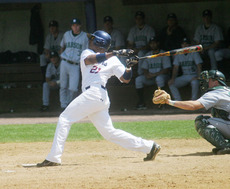 Today, you can participate in a wide variety of fantasy sports contests around the globe. And until now, many people still wants to join a fantasy league. If you are new to fantasy sports, one of the first things you will want to understand is what type of fantasy sport league you are joining. Below is a list of the most common types of fantasy sport leagues. Single-Season Fantasy League - Also referred to as a "single-year" league. These leagues follow a single-year format only and are the most common type league in fantasy sports today. None of the teams, rosters or information is carried over to the following season. New drafts are held every year prior to the upcoming season and totally new rosters are drafted at that time. This is the traditional league for most fantasy sports owners who like to start fresh every year with an entirely new group of players. Dynasty Fantasy League - Also referred to as a "total-keeper" league. At the end of the season, each team's entire roster is carried over through the off-season. Teams are able to trade during the entire off-season to better their franchise. New players can be acquired during a series of off-season draft rounds, but the large majority of the team is kept in place from year to year. This type of league is for the serious owners only, as most of the owners in these leagues are fantasy sport fanatics. The league is geared for owners who enjoy managing their teams as much during the off-season as much as they do during the regular season. Rollover Fantasy League - Also referred to as a "partial-keeper" league. Each team can "keep" a set number of players at the end of each season to be on their roster for next year. Anywhere from three to ten players are "rolled-over", depending on the sport. The remainder of the roster is then acquired via a new draft prior to the beginning of the following year. This league is perfect for the owners who enjoy the draft part of fantasy sports, but wants to keep a nucleus of players from year to year. Also, good league for an owner that has never played in a Dynasty league and wants to start out slowly to see if he/she enjoys keeping some of their players on a year to year. One Day Fantasy League – this is a new type of fantasy sports league where in only a few fantasy sports site host this, like FantasyFactor. This is the type where you win prizes every day. No season long commitment, no bars. This is where starter can enjoy fantasy sports. All of the fantasy leagues have their positives and negatives. If you are new to fantasy sports, I would recommend starting out in single-season league. As you learn more about fantasy sports and grow to enjoy the finer aspects of it, you may want to move on to a rollover or dynasty league. If you do decide to join a dynasty or rollover league, I cannot stress enough that you will need to be very prepared for your initial draft as these are players you are likely to have on your roster for several years.
This is your new blog post. Click here and start typing, or drag in elements from the top bar.
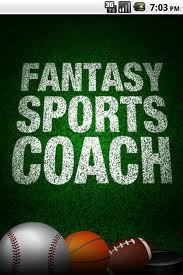 As your fantasy sports draft day approaches, there are certain criteria needed in order to complete a successful draft. Here are 10 draft day tips I believe will help you have that successful draft. Read on and be informed. 1. Have a good idea of your league mate’s strategies. Communicating with your competitors during the course of the offseason whether fantasy or just baseball related will help give you insight on player preferences and possible strategies. 2. Have a plan in place. Whether you decide on position scarcity, team balance, highest rated player, or punting a category decide on that strategy and stick to it. Creating a cheat sheet or downloading available ones will help in your decision making, and in formulating what strategy will be best for your skills. 3. Make sure you have knowledge of offseason moves that have taken place. A hitter going from friendly hitters park to a pitchers park could affect his value moving forward, and vise-versa. 4. Participate in mock drafts during the offseason. It would be best if you could get your league mates to participate in a mock draft with you, but if not, getting a general idea of where players may fall will help in your decision making as to where your type of players will fall. 5. Buy or lookup as many fantasy articles as you can before your draft. Getting many different perspectives will help you make your own conclusions on players you prefer. You should never rely solely on expert evaluations, but rather use them as stepping stones to create your own. 6. Go for the win now strategy. In keeper leagues, there will be the rookie prospect guy that will always be looking for the next big thing. It is likely that this guy will never win. You should always be looking to win now and stay away from the highly touted, never did a thing, prospect. 7. Have a plan in mind as to what type of sleepers you will target. Look at overall numbers, season splits, and lineups. Season splits will give you the best insight. 8. Save these sleepers for the middle-to-late rounds of your draft. Although some of your sleepers will be hyped by the experts, remember, they are long shots or they would not be considered sleepers. Try to get them where you have them targeted on your cheat sheets and where their value will be maximized. 9. Be conscious of roster flexibility. Try and draft some players with multi-eligibility. This can help fill position needs when injuries occur. 10. This may be the most important tip. Be ready to ADAPT. Do not necessarily change your strategy, but have multiple players for each round that you want to target. Drafts rarely ever go as planned, so preparing multiple options can be a draft saver during the fantasy league draft when time is limited.
 The Football season of 2011 emerge great information that will surely help us on our fantasy team. Here are the top fantasy sports defenses for football 2011. 1. Green Bay - This is a solid defensive unit across the board. With Charles Woodson, Clay Matthews, Tramon Williams, B.J. Raji, A.J. Hawk, Nick Collins to name but a few it's possible to go on all day about the merits of having this defense. Plus it's hard not to want to root for Clay Matthews blowing up quarterbacks every Sunday. 2. San Diego - The Chargers were a solid unit last year and there is no reason to say otherwise this season. Not to mention that the potent Chargers offense should be much improved with key players coming back from injuries enabling the defense to stay off the field and fresh for a lot more time than last year. 3. Pittsburgh - You can't go wrong with the Steelers defense. Every year they are in the top 5 for fantasy defenses and this year will be no different. They play very well together as a unit and are especially good at drafting to fill holes in what is already a formidable defense. They do drop to three because they play so much better with Polamalu on the field, but he has been so injury prone in recent years you are guaranteed a few games without him this season. 4. New York Jets - The Jets defense keeps getting better and with Darrelle Revis getting what he wanted this team could be someone to be reckoned with. This is a well coached defense that believes in the system. Don't believe me; look at what they did to the Patriots in the play-offs last season. 5. Baltimore - The Ravens could be the best run defense in the league, but their secondary is starting to age a bit. Even without a strong secondary they are still a very stout defense and are quite capable of producing some decent fantasy defense numbers all year long. Sleepers Philadelphia - The Eagles are a young defense that has loads of potential. They are fast and aggressive and have been getting better each year. Throw in the fact that they have a solid secondary this team could rack you up some serious fantasy points if they play up to their potential. San Francisco - The Niners are similar to the Eagles in the fact they are young, aggressive and have a huge upside. What they don't have is a decent secondary but luckily for them they play in the NFC West and have the 28th easiest schedule in the NFL. If you don't pick up one of the good defenses early it might be worth your time to wait a couple rounds and pick up the Niners for cheap. Use this information for your fantasy team and good luck. dit.
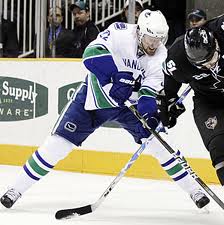 It's been a couple of months now since the fantasy hockey season ended. Plenty of time to gloat in your championships or lick your wounds. Now that the dust has settled, it's a good opportunity to look back on this past season and draw out some lessons from the past season. If you've been playing fantasy hockey for many years, few of these should come as shocking revelations; however, even the 20 year experts need to be reminded that fantasy seasons rarely pan out the way you script them at the draft table. Lesson 1 -- Location Matters As in marketing, location clearly matters to hockey players. This has become obvious on two fronts. So it makes sense to keep an eye out for a few guys finding a new home in hopes of better fantasy sports fortunes: 1. Strong fantasy performers who change locations often suffer a setback, even when moving to a "better situation". Consider a few examples from last year: • Ilya Kovalchuk's move to New Jersey saw him drop to a lousy 60 points last season. • Sergei Gonchar went from fantasy stud in Pittsburgh to an embarrassment in Ottawa. 2. Struggling players can often find new life in a new home. You see this with average fantasy options that suddenly burst onto the scene with a new club: • Lubomir Visnovsky saw his stock decline when he landed in Edmonton, but after recovering from injury in 2009, he exploded in his first full season with the Ducks. • Alex Tanguay had slowly slid into irrelevance over the past couple seasons with Montreal and Tampa. A move back to Calgary sparked him to a 69-point performance. Lesson 2 -- The Top Rookies aren't always the Best Rookies Don’t put too much faith in drafting rookies. There are too many factors, many of which are financial, that can throw off your plans. Also, more so than with established players, you need to comb the waiver wire for rookies starting 2 to 4 weeks into the season. It's at that point that teams decide who's staying and who they plan to let ripen another year in the AHL. Prior to that point, it's too much of a risk to waste valuable draft picks on promises that rarely come true. Lesson 3 -- Playoff momentum rarely carries into the next season You see this trend every season, though in our hearts we like to pretend it doesn't exist. Each year at draft time, we give special weight towards the playoff heroes of the previous spring, only to see them fall flat. 2010-11 was no exception, so learn well this rule. Look back at the playoff leaders of 2010, particularly those who surprised with their numbers: • Michael Cammalleri led all players with 13 goals last spring, bounding him up the draft charts. He followed that up with a lousy 19 goal regular season performance. • Danny Briere finished 2nd in goals and points in the 2010 playoffs. 68 points was a bit of a let down for fantasy owners this year. Simon Gagne sizzled with 9 playoff goals and followed that up with his 2nd straight 17-goal regular season total.
 Typically at this point of the summer, fantasy football fanatics have been all too busy breaking down the significance of free-agent moves while attempting to forecast how rookies will fit into their new roles as depth chart hierarchy becomes clearer. The preeminent football platform of the United States is on hold at this time, wreaking havoc on how players are projected for fantasy purposes. Virtual prognosticators are pumping out information to help guide you to a championship, or 10, but the NFL lockout has kept much of this at bay. A flood of information will come down the pipes as soon as free agency begins, and disseminating all of that data may be overwhelming. Expect a lot of conjecture and even guesswork as players find new homes, settling into their respective roles had been long underway at this point in prior years, so it could prove difficult keeping up with all of the expected changes. Successfully analyzing teams with new offensive systems and/or coaches will be paramount. Teams with veteran quarterbacks and long-standing systems seemingly should have the upper hand, but that's not to say teams to the contrary won't be competitive - it just might not happen until a little later in the season. Teams in flux or with questions at key positions will have fantasy sports owners doing the most guessing. Players like Arizona Cardinals wide out Larry Fitzgerald could have his value change dramatically if a quality quarterback takes the reins of the Cards' offense. Running backs like the Tennessee Titans Chris Johnson and Minnesota's Adrian Peterson will benefit from a veteran presence under center ... and the list goes on. Fantasy owners will want the fastest, most accurate information more than ever before. KFFL.com has already released an initial wave of player rankings and general analysis, but rest assured much more will be available in the coming weeks, with a flurry to be made available as soon we have player movement. Our rankings will undoubtedly change, quite possibly a great deal in some cases, and a player valuation ripple effect will be in full force. Keep abreast of the latest NFL lockout news and rumors by following KFFL.com's award-winning Hot off the Wire news service, and stay tuned to our fantasy football portal for all of your draft needs. It has been a long haul thus far, but it appears as though we're nearing the end of this unnecessary, painful saga. And everything will go for the better.
 The time has come to figure out what players have found a new home, what teams are shaping up to be quality contenders and who the hotshot rookies are. Just recently, I learned from my brother that the Mets are on the verge of signing Tim Redding. As he said when he broke the news to me, "Start printing the playoff tickets." We had a good laugh, but then again, even a bad pitcher on a good team... To keep from embarrassing yourself on fantasy draft day, now would be a good time to find out who retired in the off-season and who is already ruled out for the year. Don't get caught calling Greg Maddux, Salomon Torres, Todd Jones or Chad Cordero or your gaff will be remembered and brought up by your unsympathetic league mates for years and years to come. If you are a complete fantasy baseball lunatic (or nerd) like I am and you belong to several leagues, it is also time to ponder basic league specific strategy ideas. Between straight drafts, auctions, 4x4 scoring systems, 5x5 scoring systems, points leagues, leagues with daily transactions vs. leagues with weekly transactions, AL or NL only vs. both AL and NL player pools, keeper leagues, leagues with salary caps, etc., you really need to get mentally square way before the season starts. With a basic understanding of the architecture of the leagues you are competing in, the real pre-season fun can begin! Keeper leagues should be dealt with first. You need to know who will be on those teams to begin with so you know what your strengths and weaknesses are. A good keeper league team builder should also target a fantasy stud to fill the most glaring weakness of the team. For instance, if you need home runs desperately, target Ryan Howard. If you need steals, look at Jacoby Ellsbury. If you are pretty balanced and need to bolster all categories, Grady Sizemore should be in the center of your bulls-eye. The same principles apply to pitching stats, but keep in mind that pitchers are harder to predict. Saves is perhaps the most predictable pitching category but even bad closers can post inflated saves numbers so don't overvalue this category. After all of these preliminary issues are dealt with, you can begin in earnest to scout players. The best way to approach it is to read a few fantasy baseball articles on Sportsline.com or any other reliable fantasy sports source. Doing so will get you up to speed on what the experts think and will get you pointed in the direction you need to head. From there, research the players you find interesting to determine their value to their current team and look for year to year trends to determine if they are likely to maintain, grow or slow their pace. You also need to scout all the players, not just the top guys. Oftentimes, leagues are won late in drafts or on the waiver wire! Always remember, fantasy baseball is more of an art than a science. Trust your baseball intuition! If you have taken the right approach to the fantasy baseball season, your preparation will give you confidence and you will draft well. If you scramble through a magazine fifteen minutes before your draft, chances are your results will suffer. One of my favorite clichés certainly applies to fantasy baseball: If you're failing to plan, you're planning to fail!
|










 RSS Feed
RSS Feed